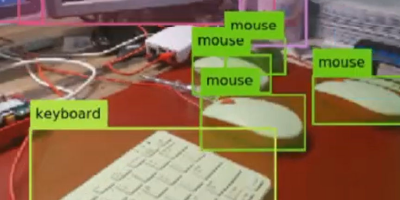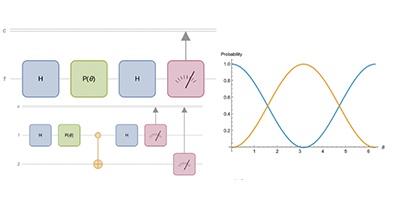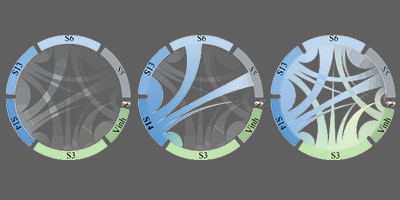Biodiversity, Wealth Distribution, Mandelbrot Sets and More: Wolfram Community Highlights
It’s been another busy few months on Wolfram Community! If you’ve kept up with the latest posts, you may have noticed that many are live, interactive notebooks embedded directly from the Wolfram Cloud. Take advantage of this feature for your next post on the Community: when authoring your post, use the “Add Notebook” button in the post editor. Learn more about embedding Wolfram Cloud notebooks directly on your website from the Wolfram Notebook Embedder documentation (or download the JavaScript library directly).
We’ve gathered some of our favorite Wolfram Community posts showing the variety of applications made possible with the Wolfram Language.

A Precise Explanation of the p–Value
Seth Chandler
The p-value is a crucial concept in statistics—and yet, it’s also a commonly misunderstood one. People regularly misstate or misrepresent its meaning, and doing so can have devastating consequences in research and the outcomes therein. Seth Chandler, a Foundation Professor of Law at the University of Houston, clearly defines the notoriously slippery concept in his computational essay, posted to Wolfram Community in a functional cloud notebook. Want to play with Seth’s code yourself? Copy the cloud notebook to your own cloud account!
Vitamins: Chemical Data, Visualization, Foods and Nutritional Info
Claudio Chaib
Claudio Chaib, a technical manager from São Paulo, Brazil, uses data from the Wolfram Knowledgebase to design VitaminData. This new function quickly compiles crucial information about vitamins, providing you with chemical and physical data, classification, 2D and 3D visualizations, various properties, food information and nutritional data. In this post, Claudio also ranks foods with the highest amount of different vitamins—bringing all the top-ranking candidates together would make for quite an interesting meal.
How to Find Border Coordinates
Mads Bahrami
Locating borderlines between countries is easy enough with any map—but what about finding a border’s coordinates? Wolfram’s own Mads Bahrami wrote a computational essay showing all the steps needed to find the exact coordinates between any two countries.
Biodiversity: The Invasive Stink Bug
Jofre Espigule-Pons
Investigating an increase in stink bug sightings, fellow Wolfram employee Jofre Espigule-Pons uses observation data to create a GIF of its spread. His GIF showing the progressive proliferation of the brown marmorated stink bug across the United States sparked many a conversation—ranking second on Reddit’s home page, with more than 41,000 upvotes on r/dataisbeautiful, and close to 4,000 comments in 26 communities across Reddit. Keep an eye out for more in Jofre’s blog post, coming soon!
Mandelbrot Set on a Neural Network
Silvia Hao
Silvia Hao, CEO at Glimscape Technology in China, shows how to implement a neural network to compute the Mandelbrot set in a tour de force of beautiful Wolfram Language graphics. Silvia creates a custom function that can more efficiently generate visualizations of Mandelbrot sets at high resolutions.
Ingest Airbnb Review Data
Anton Antonov
How prepared are you for your next getaway? Gather and analyze the information you need about prospective Airbnb rentals, using rental reviews and machine learning algorithms. And even if your ideal vacation is staying in, you can use the code from Anton Antonov, co-founder of Accendo Data LLC in Florida, on other machine learning datasets as well—including restaurant and product reviews.
Circular Diagram of the Wolfram Neural Net Repository
Kotaro Okazaki
Kotaro Okazaki, a Japanese inventor from Fujitsu Limited, creates a spectacular visualization of the Wolfram Neural Net Repository. The visually stunning, informative diagram represents the breadth, depth and diversity of models available.
Wealth Distribution and Social Mobility in a Simple Economic Model
Diego Zviovich
Diego Zviovich uses Mathematica for both work and leisure: at his job as a supply chain director at the Coca-Cola Company, as well as for his hobbies, which include performing financial portfolio simulations. We get a glimpse of what this hobby entails in his Community post, where Diego formulates and simulates a simple economic model to explore the gap between the rich and the poor, and demonstrates the emergence of a wealth gap following a Pareto distribution.
Biodiversity: The Computational Pumpkin
Jofre Espigule-Pons
While autumn may be associated with pumpkin picking, carving and pie-baking, Jofre Espigule-Pons demonstrates that pumpkins can be used for computational experiments all year round! Venture into pumpkin forensics by determining the appearance of the whole pumpkin from only one slice, find out a pumpkin’s nutritional value or use math to create a 3D pumpkin—all made possible with the power of the Wolfram Language.
If you haven’t yet signed up to be a member of Wolfram Community, now is the perfect time to do so! You can join in on discussions similar to the ones highlighted in this blog, post your own work in groups that cover your interests and browse the complete list of Staff Picks.











Comments